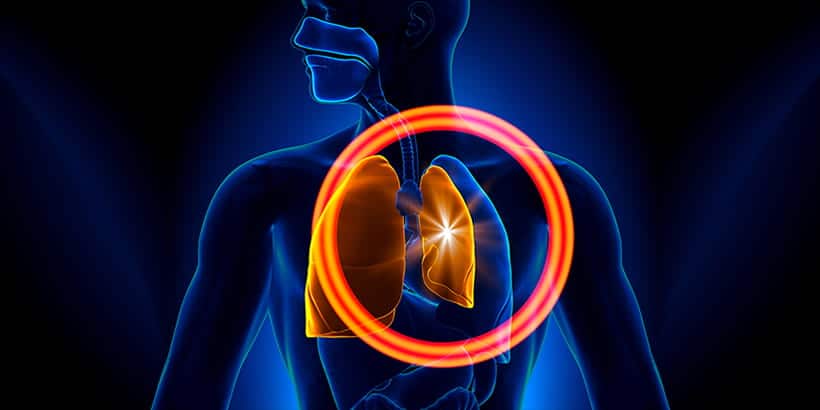STEMI
 ST-elevation myocardial infarction (STEMI) is a clinical syndrome defined by characteristic symptoms of myocardial ischemia in association with persistent electrocardiographic (ECG) ST elevation and subsequent release of biomarkers of myocardial necrosis (O’Gara). The most important intervention to improve early survival for patients with STEMI presenting within 12 hours of symptom onset is prompt myocardial reperfusion, with a 20% to 25% relative risk reduction with fibrinolytic therapy (FTT). There is a 30% additional relative risk reduction with primary percutaneous coronary intervention (PCI) (Keeley).
ST-elevation myocardial infarction (STEMI) is a clinical syndrome defined by characteristic symptoms of myocardial ischemia in association with persistent electrocardiographic (ECG) ST elevation and subsequent release of biomarkers of myocardial necrosis (O’Gara). The most important intervention to improve early survival for patients with STEMI presenting within 12 hours of symptom onset is prompt myocardial reperfusion, with a 20% to 25% relative risk reduction with fibrinolytic therapy (FTT). There is a 30% additional relative risk reduction with primary percutaneous coronary intervention (PCI) (Keeley).
Diagnosis
Symptoms of Myocardial Ischemia
The symptoms of myocardial infarction (MI) are varied, with some patients having one symptom and others having multiple. Those presenting with MI, but without chest pain, constitute between 33 to 58% of all MI presentations (Canto). Along with chest pain, other symptoms can include the following:
- Chest discomfort and/or tightness
- Shortness of breath or cough
- Shoulder pain
- Sweating
- Left and/or right arm pain or discomfort
- Upset stomach or indigestion
- Fatigue and/or weakness
- Neck or jaw pain
- Sense of dread/impending doom
- Back pain
The presence of atypical symptoms such as shortness of breath, sweating, back pain, fatigue, and nausea make symptom interpretation difficult for those experiencing them (McKee).
ST-Elevation
Diagnostic ST elevation in the absence of left ventricular (LV) hypertrophy or left bundle-branch block (LBBB) is defined as new ST elevation at the J point in at least 2 contiguous leads of ≥2 mm (0.2 mV) in men, or ≥1.5 mm (0.15 mV) in women in leads V2–V3 and/or of ≥1 mm (0.1 mV) in other contiguous chest leads or the limb leads (Thygesen). The majority of patients will evolve ECG evidence of Q-wave infarction, and ST depression in ≥2 precordial leads (V1–V4) may indicate transmural posterior injury (O’Gara). Transthoracic echocardiography may provide evidence of focal wall motion abnormalities and facilitate triage in patients with ECG findings that are difficult to interpret (O’Gara).
Biomarkers of Myocardial Necrosis
The universal definition of MI includes an elevated level of cardiac troponin (cTn), with signs or symptoms consistent with myocardial ischemia (Thygesen).
In 1965, a new protein constituent of the cardiac myofibrillar apparatus was discovered, which subsequently came to be known as troponin (Ebashi), and in the late 1990s, a sensitive and reliable radioimmunoassay was developed to detect it in the serum (Katus). Since then, the role of cardiac troponins as diagnostic biomarkers of myocardial injury in the context of acute coronary syndrome (ACS) has been well established (Garg). Troponin levels appear in the serum 4 to 10 hours after the onset of AMI (Jaffe), peak at 12 to 48 hours, and remain elevated for 4 to 10 days (Garg).
Cardiac troponin (cTn) is a complex comprising three subunits (Garg):
- Troponin C acts as the calcium-binding site (skeletal and cardiac muscle);
- Troponin I inhibits interaction with myosin heads in the absence of sufficient calcium ions (cardiac myocytes);
- Troponin T attaches the troponin complex to the actin filament (cardiac myocytes).
Troponin I and T isoforms are highly specific and sensitive to cardiac myocytes and, therefore, are known as cardiac troponins (cTn) (Garg). The detection of cTn-I or cTn-T in the bloodstream is, therefore, a highly specific marker for cardiac damage (Ooi).
Even though increased cTn-T levels are highly indicative of a cardiac event, it is still not 100% specific. There are six mechanisms that have been proposed to explain the release of troponin into the bloodstream: normal cell turnover, myocyte necrosis, apoptosis or programmed cell death, proteolytic fragmentation, increased cell membrane permeability and membranous blebs (Garg).
Cardiac biomarkers for diagnosis of AMI have become more and more sensitive in recent decades, but there is still not a perfect test to diagnose AMI. Clinicians need to use every option given to them to quickly and accurately determine what is happening with their patient. Clinical assessment, 12-lead ECG, and cardiac troponin (cTn) I or T form the diagnostic cornerstones of patients with acute onset chest pain (Garg).
Recommendations
Relevant class I recommendations from the 2013 American College of Cardiology Foundation/AHA STEMI guidelines include (1) a 12-lead ECG by EMS personnel at the site of first medical contact (FMC) in patients with symptoms consistent with STEMI; (2) EMS transport directly to a PCI-capable hospital for primary PCI with an ideal FMC-to-device time system goal of 90 minutes or less; (3) for patients initially presenting to a non–PCI-capable hospital, immediate transfer to a PCI-capable hospital for primary PCI, with a FMC-to-device time system goal of 120 minutes or less; and (4) in the absence of contraindications, fibrinolytic therapy for patients at non–PCI-capable hospitals when the anticipated FMC-to-device time at a PCI-capable hospital exceeds 120 minutes because of unavoidable delays (O’Gara).
References
Canto JG, Rogers WJ, Goldberg RJ, et al. Association of age and sex with myocardial infarction symptom presentation and in-hospital mortality. JAMA. 2012; 307: 813–822.
Ebashi S, Kodama A. A new protein factor promoting aggregation of tropomyosin. J Biochem. 1965; 58:107–108.
Fibrinolytic Therapy Trialists’ (FTT) Collaborative Group. Indications for fibrinolytic therapy in suspected acute myocardial infarction: collaborative overview of early mortality and major morbidity results from all randomized trials of more than 1000 patients. Lancet. 1994;343:311–322.
Garg P, Morris P, Fazlanie AL, Vijayan S, Dancso B, Dastidar AG, Plein S, Meuller C, Haaf P. Cardiac biomarkers of acute coronary syndrome: from history to high-sensitivity cardiac troponin. International Emergency Journal. 2017; 12: 147-155.
Jaffe AS, Landt Y, Parvin CA, et al. Comparative sensitivity of cardiac troponin I and lactate dehydrogenase isoenzymes for diagnosing acute myocardial infarction. Clin Chem. 1996; 42:1770–1776
Katus HA, Remppis A, Looser S, et al. Enzyme linked immuno assay of cardiac troponin T for the detection of acute myocardial infarction in patients. J Mol Cell Cardiol. 1989; 21:1349–1353. DOI:10.1016/0022-2828(89)90680-9.
Keeley EC, Boura JA, Grines CL. Primary angioplasty versus intravenous thrombolytic therapy for acute myocardial infarction: a quantitative review of 23 randomized trials. Lancet. 2003;361:13–20.
McKee G, Mooney M, O’Donnell S, O’Brian F, Biddle MJ, Moser DK. A cluster and inferential analysis of myocardial infarction symptom presentation by age. European Journal of Cardiovascular Nursing. 2018;17:637-644.
O’Gara PT, Kushner FG, Ascheim DD, Casey DE Jr, Chung MK, de Lemos JA, Ettinger SM, Fang JC, Fesmire FM, Franklin BA, Granger CB, Krumholz HM, Linderbaum JA, Morrow DA, Newby LK, Ornato JP, Ou N, Radford MJ, Tamis- Holland JE, Tommaso CL, Tracy CM, Woo YJ, Zhao DX. 2013 ACCF/AHA guideline for the management of ST-elevation myocardial infarction: a report of the American College of Cardiology Foundation/American Heart Association Task Force on Practice Guidelines. Circulation. 2013;127:e362–e425.
Ooi DS, Isotalo PA, Veinot JP. Correlation of antemortem serum creatine kinase, creatine kinase-MB, troponin I, and troponin T with cardiac pathology. Clin Chem. 1989; 46:338–344
Thygesen K, Alpert JS, Jaffe AS, et al. Third universal definition of myocardial infarction. Circulation. 2012;126:2020–35.
Dan Bunker DNAP, MSNA, CRNA—Dan has worked in the healthcare industry for nearly 30 years. He worked as a registered nurse in the coronary care ICU for 7 years and was a flight nurse with Intermountain’s Life Flight for nearly 10 years. He has been a certified registered nurse anesthetist (CRNA) for 11 years, working in the hospital setting as well as maintaining his own private practice. In addition, he is a professor in the nurse anesthesia program at Westminster College in Salt Lake City, Utah. He has served in various leadership roles within the Utah Association of Nurse Anesthetists (UANA) and is currently the president-elect.


